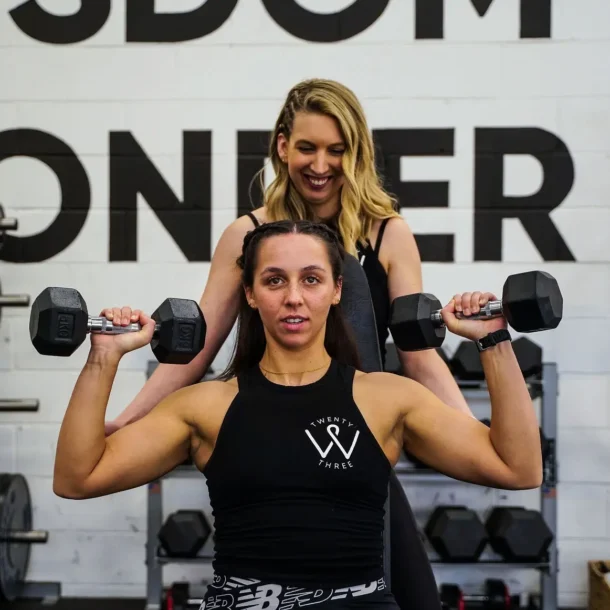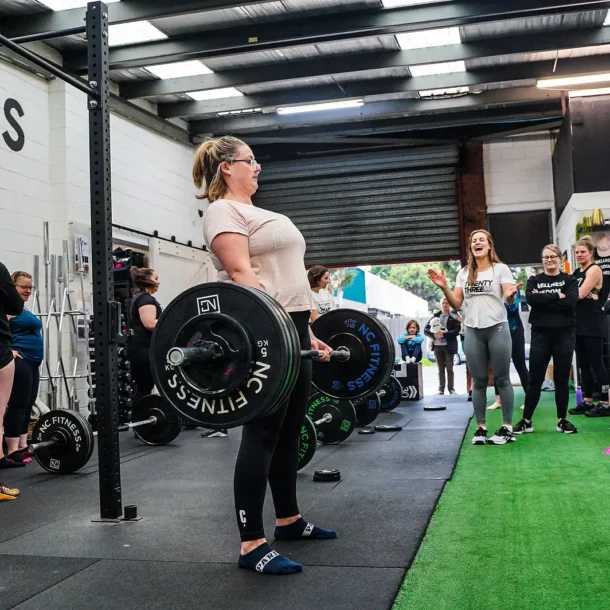
How often do you think about your gym shoes as an essential part of your workout kit?
Think about it. A comfortable shoe can make or break a good workout.
But chances are, your workout shoes actually also need to live beyond the gym.
After chatting to some of the 23W ladies the other day, I realised I was guilty of using the one pair of shoes for everything! Walking, lifting, running, HIIT, coffee… While it can be tempting to use the same pair of sneakers for all leisure based pursuits, it’s ideal to have a pair of shoes that you use just for the gym. Obviously cost does come into it too. But maybe having 2 different shoes might increase longevity.
Seriously, I have ruined so many pairs of expensive running shoes, because of a lack of organisation to get the right shoe on my foot.
Let’s unpack how a running shoe differs from a weight lifting shoe and why you should try to find something that is both functional and that looks good.
ANNNNNDD sometimes… barefoot is also best! Read why squatting barefoot could be best!
A running show is designed for running and is a must. In running long-distances or running a lot, you need to take care to find the right pair of shoes that are shock absorbing, offer the right arch support for you and not create more issues in the foot, calf, knee or ankle health. If you run often, keep your runner just for this purpose only.
Consider your running surface, duration of running and running conditions. Long distances want a more cushioned shoe whilst you’re more likely to benefit from a more flexible training shoe over shorter distances.
Weightlifting shoes are purposely designed to improve the wearer’s stability. This is achieved by having a wide base and a raised heel. This raising of the heel allows the ankle joint to bend while still keeping the wearer’s feet flat, which is important for balance. Think about your squat, if you are able to keep your whole foot on the ground and drive through the whole foot, you will have an easier time lifting weights with good form.
Another great advantage of wearing the correct shoes for working out is to help in the prevention of injury. If the weightlifter loses stability, this force shifts to other areas of the body such as the joints. When this occurs, there is a chance that an injury can happen.
Ideally you are actually looking for a shoe with a harder sole. This is to improve the transfer of force. A hard sole does not allow the force to be spread across the floor. Instead of this, the power and energy that passes through the feet is channeled more directly to the lift.
There are lots of shoes available in this market. Personally I am a big fan of a barefoot style of shoe with a wide toe box for optimal foot health. A barefoot shoe will ensure that you continue to build strength in your glutes, arches and calves, while also making sure you don’t crumple you feet- allowing them to naturally spread. If you suffer from re-occurring plantar fasciitis consider what the toes box of your shoe is doing. It should be wide with a minimal lift.
Let’s unpack some of the more common shoes on the market at the moment, right across the spectrum of different uses. But a girl has got to look good and feel good as well?! That’s why there’s a few of my favourite ath-leisure options included in here as well:
General weightlifting- Clay By NoBull

Deadlifting- Flat soled shoes- Converse Chuck Taylor High Top Sneaker
Running – Kayano by Asics
General shoe for gym- Minimal arch- Vivo Primus
Multipurpose shoe- Reebok Nanno
Great all rounder No. 2- Nike Metcon 7


Ange Drake is an personal trainer, women’s empowerment coach and fitness blogger in the northern suburbs of Melbourne. She is the director of one of the few womens’ only strength training gyms in Melbourne, 23W. Ange helps women to learn how to use strength based training, nutritional strategies and a positive mindset to transform their bodies, relationship with food and mind.
Can’t decide which of our packages is best suited for you? Take our questionnaire to help you decide!





